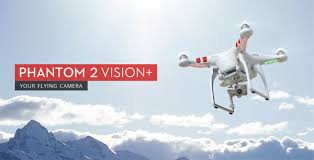 This follow-up article on our Phantom review of a few weeks ago is focused almost exclusively on demonstrating the fantastic video capabilities of this much improved platform. We have flown the Phantom 2 Vision in extreme gusty weather and it performed impeccably.
This follow-up article on our Phantom review of a few weeks ago is focused almost exclusively on demonstrating the fantastic video capabilities of this much improved platform. We have flown the Phantom 2 Vision in extreme gusty weather and it performed impeccably.
Check it out on the videos.
The first clip is a couple of minutes of some harvesting operations in the late afternoon. Note the brilliant colours. The wind was fairly strong but not gusty.
All of the videos here are posted without any corrective measures, only a soundtrack was added. So what you see is what you get.
Notice that the horizon is not extremely curved but quite straight, unlike some of the typical wide-angle photos that can do with some post-processing in Lightroom or Photoshop to straighten out the horizons.
The second clip was taken in very windy, gusty conditions as you can see from the flag flying and the windsock on the airfield.
Warning: normally operations around aerodromes are “verboten” because of potential conflict with other aircraft. Here we were at a private airstrip where there was no traffic at the time.
The only other aircraft was a very vintage Dakota DC3 which had been converted recently to an amazing flight simulator in the cockpit and a superb two-person accommodation in the fuselage. You will also see the stunning backdrop of the Stirling ranges and a unique grain mill.
Because of the rather extreme conditions I chose to get off the ground quickly and to recover the Phantom by hand. It was hard work for the little copter as it was bucking around, constantly correcting itself. Yet, the stabilising gimbal kept the video on a very even keel.
Judge for yourself.
Ground Station
As a pilot I do a fair bit of flight planning and have used a variety of software-based flight planners. But none of them are (naturally!) as simple to use as the Ground Station that is built into the Vision app. Swipe the camera app and a Google Earth map appears with the home Position of the Phantom. You now tap on the screen to get the first waypoint for the copter to fly to, followed by a maximum of another 15 waypoints. Next you can set the height for the individual legs that you would want the aircraft to fly and at what speed.
With a press of the button the Phantom launches itself and flies the assigned mission. I must say I had a bit of trepidation initially because you’re not flying the aircraft anymore, it’s completely on autopilot. I knew of course I could take control at any moment just by flicking a switch but I was quite relieved when it completed its mission followed by an auto landing.
When you use Ground Station you can completely concentrate on getting the camera angles right. Just make sure that when you have high trees in your flight path you fly above them with a safe height margin!
Conclusion
The DJI Phantom 2 Vision Plus Version 3.0 , which we have tested extensively over the past few weeks courtesy of Rise above Aerials, has performed impeccably.
This truly is a flying camera that will deliver excellent, stabilised video and high resolution still images.
Is it expensive? That’s the wrong question.
At around 1900 Aussie dollars it’s a fair investment but also value for money for a high-quality flying camera with loads of fun guaranteed.
You will enjoy taking a new look at familiar scenery from an elevated perspective!



